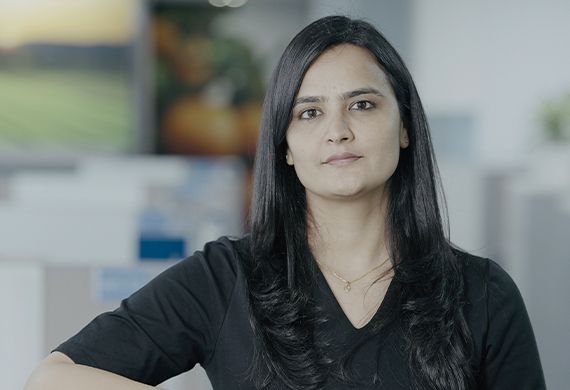
Women Farmers Driving Climate-Smart Innovation Across Rural Landscapes
By: Poonam Poonia, Marketing Director, Corteva Agriscience
Poonam Poonia, a member of Corteva South Asia’s leadership team, leads marketing for Crop Protection with 16+ years in agriculture across diverse regions. She combines brand expertise, commercial insight, and environmental focus to drive growth, innovation, and sustainable farming practices.
In an engaging interaction with Women Entrepreneurs Review Magazine, Poonam shares her insights on evolving consumer sentiment, agri-tech adoption in South Asia, and the overlooked power of storytelling in rural marketing—especially in building trust with women in agribusiness and rural entrepreneurship.
What current shifts do you see in consumer sentiment and agri-tech adoption across South Asia? What’s being undervalued in the marketing strategies addressing rural markets today?
Consumer sentiment is evolving across South Asia, driven by rising awareness, a focus on ROI, improved access to knowledge & opportunities, and evolving needs. Farmers are becoming more environmentally conscious and are actively seeking sustainable practices. There is growing interest in green chemistry products and a better understanding of compliance standards like MRL (Maximum Residue Limit) and PHI (Pre-Harvest Interval and they are increasingly evaluating long-term value and effectiveness over choosing low-cost, generic alternatives. There’s also a visible value shift in the market. Demand for high-quality produce is rising, even for domestic consumption. Consumers are willing to pay a premium for better quality, and farmers are responding to this expectation. Frequent and unpredictable climate events, such as untimely rains, floods, heatwaves, and inconsistent monsoons, have made resilience and sustainability critical priorities for growers.
Agri-tech adoption is also gaining momentum, though the pace varies across regions. Digital access has enabled precision farming, timely weather alerts, digital marketplaces, crop advisory services, and supply chain digitization. Farmers are also exploring innovations like drone-based spraying and monitoring. In India, the rise of over 1,300 agri-tech startups, supported by active venture capital funding and government initiatives, is accelerating this transformation.
A marketing strategy that is being undervalued is customer centricity, as we address rural markets today. There must be a deeper understanding of the rural landscape and farmers, and the approach should be driven by the evolving needs.
What blind spots still exist in how the farming industry builds brand narratives, especially for women decision-makers in agribusiness supply chains and rural entrepreneurship?
Women are leading the agricultural ecosystem at various fronts. However, one major blind spot is the lack of brand stories that meaningfully engage women as decision-makers. In most narratives, women in agriculture are still portrayed in supportive or background roles, rather than as leaders or key influencers. Rural brands rarely have women's representation. There’s a clear gap in inclusive visuals, language, and storytelling that reflect their growing role in agribusiness and rural entrepreneurship.
In a market where innovation is often tech-driven, how can storytelling in marketing play a disruptive role in reshaping farmer trust—particularly among women cultivators and producers?
When innovation is driven by technology, storytelling becomes more than a communication tool; it becomes a real catalyst, especially for women cultivators and producers who often remain unseen in the agri value chain. Disruptive storytelling can humanize technology by grounding it in relatable, local experiences. For example, when a woman farmer sees someone like herself using a drone to save time and improve spraying efficiency with better returns, it builds a sense of possibility - “If she can do it, why can’t I?”
Featuring women as early adopters or tech innovators doesn't just shift perception for other women; it influences the broader ecosystem by validating their leadership and decision-making power. Storytelling also plays a critical role in helping women understand the impact of these innovations more clearly, how they benefit their productivity, income, and everyday challenges. It inspires action, encourages adoption of new practices or products, and opens a more inclusive narrative where women see themselves as active agents of change, not just participants.
How do you ensure that your long-term roadmap reflects climate-conscious farming while balancing regional cultural nuances and women's participation in sustainable agricultural practices?
In agriculture, sustainability isn’t a choice; it’s a long-term commitment. By grounding our approach in science-based stewardship, we can enable women farmers to play a central role in protecting soil, water, and biodiversity while meeting the demands of a growing population.
One of the most effective ways to achieve this is by creating an ecosystem of regional working groups that include local universities, women’s self-help groups (SHGs), indigenous knowledge holders, and farmer producer organizations (FPOs). A locally led roadmap ensures that climate-smart practices are also culturally relevant. In doing so, sustainability goes beyond being a concept; it becomes a movement.
Saroj Devi, a farmer from Bharatpur, is a strong example of this in action. After joining a local FPO and participating in a regional women’s training program, she adopted a hybrid millet variety well-suited to her land and climate. The shift reduced her input costs, improved her yields, and increased her income, allowing her to support her family and invest back into her farm. Her journey shows how access to region-specific innovation and sustainable practices can empower women to lead the way in climate-smart farming.
Which conventional marketing KPIs are irrelevant today, especially when trying to measure impact among women farmers and agri-entrepreneurs in tier-2 and tier-3 areas?
In rural markets, trust carries far more weight than website traffic. The true indicators of impact aren't clicks or cost-per-lead, but how many women farmers are talking about your brand and its story. Metrics like the adoption-to-referral ratio offer a far better lens to measure influence. Female farmer engagement index and repeat usage are more meaningful than digital impressions or reach. Cost-per-acquisition can be misleading in rural areas, where trust is built over time through multi-touch models that involve demo plots, field visits, and peer recommendations. These real-world interactions are where long-term value is created.
What’s your message to aspiring women leaders in agriculture marketing who are pushing against both industry bias and rural systemic barriers to be seen and heard?
This is one of the most fascinating fields, and every woman who dares to step into the spotlight has the power to create real change. You have the chance to reshape the landscape. Where others see resistance, you can sow resilience. Every woman’s presence in this industry is not just progress, it’s precedent. Every insight you bring, every woman farmer you uplift, every story you tell has the potential to redefine the future of agriculture with those who are making a difference. Keep showing up, not just for yourself, but for every woman still waiting to be seen. Keep inspiring others to believe they can make a difference here, too.






